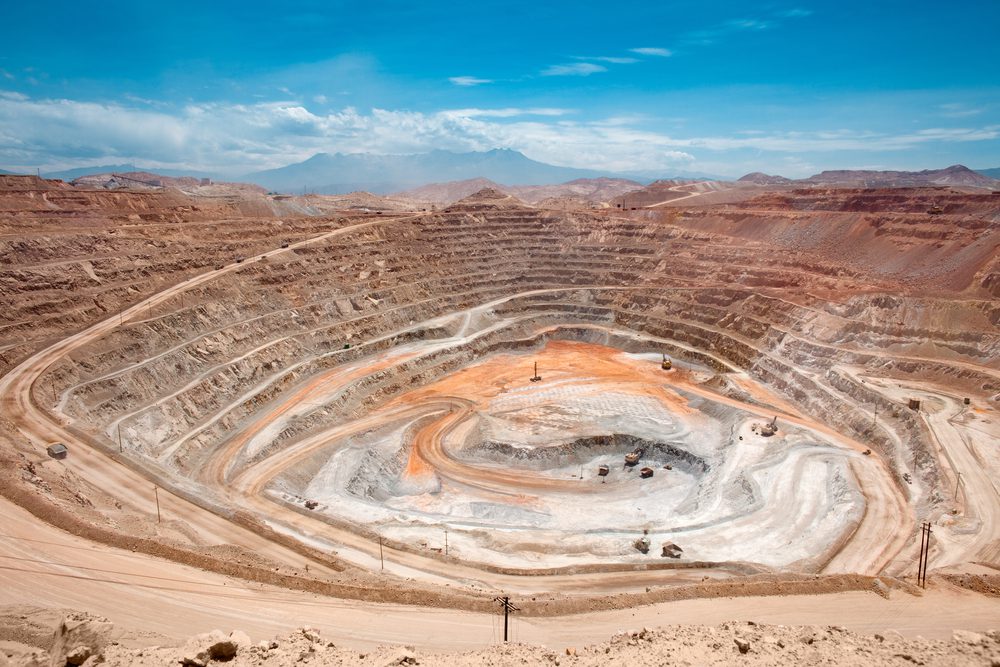Like the start of any new year, 2025 is ripe with opportunities for the copper supply chain.
First off, let’s acknowledge that there’s a lot we still have to unpack domestically. The United States has a new (well, returning) president, which could lead to some shifting in the global markets. We’re also in the midst of a new domestic manufacturing resurgence partly because of increased renewable energy production.
While we can’t predict the future, some things are less of a mystery than others. For now, join us as we break down the top eight copper U.S. supply chain trends to see what should be on your radar this year.
Americans are using more electricity than ever before, and the trend shows no signs of slowing down in 2025.
People and companies are pushing the grid to its limit, from data centers and electric vehicles to increased electrification. But with so much electricity flowing, what can utilities, operators, and end users do to keep the lights on?
Although electricity use has held relatively steady since 2007, those days are over. According to the U.S. Energy Information Administration, electricity consumption grew by 2% in 2024 and could increase similarly through 2026.
“If electricity consumption grows in each of the next two years, it would mark the first three years of consecutive growth since 2005–07, though this result could be affected significantly by weather,” the report explained in its 2025 Short-Term Energy Outlook.
Increasing energy consumption has highlighted several new problems for the energy industry. For example, renewable energy can help address growing demand, but grid interconnection is expensive and can take years. The Department of Energy (DoE) has said as much, noting that “a large amount of potential clean power capacity has been proposed but is gridlocked due to the wait times and costs of connecting to the transmission grid.”
In 2025, look for energy efficiency initiatives to take hold alongside a push for better energy independence. If successful, we can bolster energy security while tackling the country’s long-term climate goals.
As the age-old saying goes, “You can’t make an omelet without breaking a few eggs.”

Rapid technological breakthroughs like AI, electric vehicles, and renewable energy can help the U.S. achieve once unimaginable goals. At the same time, those technological marvels require more copper, something that might soon be in short supply.
Copper prices will soar as the supply chain tightens because rising demand is outpacing supply. However, the need for copper will push companies and countries to adopt more efficient recycling techniques for economic growth.
Recycling methods have room for improvement, and new technology will help get more out of old materials. At the same time, look for urban mining to become more popular. As the amount of electronic waste builds up, entrepreneurs will find ways to reduce e-waste while recovering valuable materials. Beyond e-waste, urban mining will find its footing in construction demolition, recycling metals like steel, aluminum, and copper.
Let’s be honest – copper mining is already struggling to keep up with demand. Unfortunately, the mining industry probably won’t grow rapidly in the next couple of years.
Recycled copper currently makes up about one-third of the overall supply. With demand projected to increase dramatically, recycling offers a reprieve from new mining operations.
Investing in recycling methods recovers critical metals and minerals from used products and materials, getting them back into circulation. It also reduces landfill waste, bolsters a stronger, more circular supply chain, and reduces reliance on environmentally destructive mining.
Although it’s nice to see recycled copper make an impact on global supplies, the World Resources Institute says there’s more to do. The international organization believes copper recycling rates must double to support eventual demand.
Copper ore grades have fallen dramatically, forcing mining companies to do more to produce the same amount of ore.
According to Deloitte, weight average head grades for copper fell nearly 30% between 2001 and 2012. Combine declining ore grades with a rapid increase in demand, and you see where this is going.
As mining companies rush to stabilize supply and demand, ore grades slip further, requiring more mining, destruction, and environmental backlash. Deloitte estimates it could mean mining companies increase ore processing volumes by 44%.
The focus will shift toward better, more efficient mining techniques. Companies like StillBright will move to the front lines, developing new methods to capture precious copper. Their process involves electrochemical reductive leaching, using vanadium to remove up to 99% of copper from sulfide ores.
The company says its process is much cleaner than current copper extraction methods, including pyrometallurgy.
Improving mining methods is one problem – figuring out where to dig in the first place is another.
Artificial intelligence can help companies discover more copper stores in previously untapped areas. The technology could also help track down stores of other critical minerals, including ones currently caught in geopolitical disputes, including with China.
As tensions keep rising with the Asian nation, the U.S. could be on the outside looking in on several minerals. The country has already restricted antimony, gallium, and germanium shipments and could curtail other critical minerals.
AI and machine learning using accessible data could help America find stores of critical minerals domestically or abroad. The result could be better mineral production with less environmental damage, along with better security.
Better data can also lead to better labor efficiency since miners perform less work for better results.
In early 2022, the USGS did not include copper on its Critical Mineral List.
The report was tied to the Energy Act of 2020, requiring the agency to create and update a list of critical minerals at least once every three years. To say the announcement was surprising might be an understatement, especially given the metal’s sharp price spike in March 2022.

Since the USGS’ announcement, companies, industries, and other governmental agencies have vocalized how vital copper is to our future. In 2023, the Department of Energy added copper to its “Electric Eighteen” list. This list of materials includes common metals like aluminum, lithium, and graphite alongside rarities like gallium, iridium, and dysprosium.
So, why does it matter whether the USGS and DoE consider copper critical? We already know how crucial copper is to electricity, but it’s also vital to electronics, future technology, and renewables. Without a steady, stable copper supply in the U.S., the country could face volatility, shortages, and even global imbalances.
Countries like China and those in the European Union see copper as key to their futures, but so does the U.S. The sooner the U.S. jumps on the bandwagon, the faster it can develop supply chain resilience. It also opens the door for investments in new partnerships, expanding on existing ones and ensuring stockpiles are available.
Ok, so electrification isn’t exactly a new trend, but it’ll take on more importance in 2025 and beyond.
Electrification is the art of making non-electric things run on electricity. For example, electric vehicles could replace gas-guzzling cars, and electric stoves could replace gas ones. If something runs on fuel, it can someday convert to electric power.
An electric future is possible, but the country needs a MASSIVE investment in the electrical grid. It starts with upgrading current transmission infrastructure, adding resiliency, and increasing access to electrical power, like EV chargers.
This initiative is about more than creating efficient appliances. Electrification also dovetails neatly into the ongoing renewable revolution. Electrification involves relying less on fossil fuels, leading us to lean more into solar, wind, and battery technology. But, with a new president taking office and potential changes on the horizon, renewables may see headwinds.
Additionally, although renewables have grown incredibly in the past 15 years, fossil fuel power plants are a reliable backbone. In 2023, about 60% of our electricity came from fossil fuels like natural gas, coal, and petroleum. Attempting an energy transition without a backup power generation plan could have a devastating impact on electricity supplies.
Beyond fossil fuels, the U.S. has other problems to address, including questions about interconnections, microgrids, and future solar development.
We’ve heard about AI endlessly over the past two years, but 2025 might finally be when it hits the mainstream.
Artificial Intelligence (AI) and machine learning are ingrained into nearly every industry, simplifying tasks and improving bottom lines. Data centers are coming online nationwide to support the technology’s continued adoption, growth, and development.
But every rose has its thorn, and AI is no different. Despite its astonishing power and capabilities, AI uses a lot of electricity. While industries and end users dive in to explore what’s possible, we’ll need to eventually figure out how to power it all.
We’ve discussed the role of automation in earlier trends articles, but this year feels more real.
Automation has evolved from an assembly line of robots on the manufacturing floor relying on programmable logic controllers. Today, automation programs are trusted analysts alongside decision makers, using data to perform predictive analysis, forecasting, and other business. They help companies organize and optimize stock to maximize profits and improve the bottom line.
Beyond planning instances, automation has played a critical role in supporting blockchain development throughout the supply chain. They take the guesswork out of supply chain planning and make the ecosystem more flexible across the board. This gives supply chain planners the power to pivot quickly and better predict potential disruptions.
While some industries are thriving, others face an uphill battle to find enough workers to fill their ranks.
Worker shortages come in many forms and aren’t always tied to the economy. Strong economies lead to more created jobs, but in the case of trucking, construction, and manufacturing, sometimes worker preference and unfortunate stigmas get in the way.
The trucking industry has long had problems attracting workers and filling jobs. Between an aging workforce, long hours, licensing hurdles, and hard-to-shake stereotypes, trucking companies are struggling.
According to the American Trucking Association (ATA), the industry must hire 1.2 million drivers over the coming decade. It seems like a monumental number, but that’s JUST to keep pace with demand and replace retirements. Add on another 41,000 open diesel tech jobs, and we’re looking at an industry facing severe labor shortage headwinds.

The good news is that industry groups and the government are trying to address the issue. For example, the ATA wants streamlined credentialing for drivers to earn CDLs. Organizations are also pushing for better trucker accommodations, improved safety measures, and more opportunities for young drivers.
“The LTL market rebounded somewhat in 2024 from the previous year’s Yellow Freight closure,” Marcus Tagliaferri, Kris-Tech’s Supply Chain Director, explained. “Yellow was one of the largest providers, which impacted capacity. Though many of the company’s terminals were purchased and reopened, capacity remains tight, and providers pushed through General Rate Increases.
For full truckload freight, there was capacity in 2024, creating favorable spot pricing and we see that trend continuing. Still, efforts from the ATA regarding driver shortages have the potential to help freight costs, specifically LTL.”
The manufacturing sector’s labor market has loosened slightly, but the industry still faces hiring problems.
Manufacturing struggles to bring in younger employees despite good-paying jobs and skilled labor opportunities for machinists and engineers. According to an outlook survey by the National Association of Manufacturers (NAM), nearly two-thirds of respondents cited attracting and retaining talent as their biggest issue.
Like trucking, manufacturing is facing a potential chasm of job openings. The NAM suggests that 3.8 million jobs could be up for grabs over the next decade, with the vast majority coming from retirements. Other factors impacting job openings include industry growth and legislative actions.
The construction industry is on the rise, as contractors expect both sales and staff to increase to start the year.
Though recent workforce levels have improved, Associated Builders and Contractors suggests the industry is still lagging. The organization believes construction companies must maintain hiring levels this year and add another 454,000 new workers. Experts with the group note that about 20% of the current construction workforce is 55 or older, meaning they’ll soon retire.
On the bright side, construction companies have a few tricks up their sleeve to optimize efficiency and increase hiring. Some companies have seen AI solutions simplify everything from project planning and site analysis to labor costs and risk mitigation.
Though new technology doesn’t replace hammers and saws, it can improve how the current workforce works.
The copper supply chain is the least surprising, yet most impactful, trend in 2025.
It’s worth noting the copper supply chain has been resilient since recovering from the pandemic. However, headwinds could cause problems as we look to 2025, 2026, and beyond.
Copper prices held steady below $3 per pound until the pandemic but have bounced around quite a bit in recent years. At one point in mid-May 2024, daily pricing even touched $5, but has cooled off slightly since then. If prices hold steady, then the supply chain should stabilize. That changes if we start seeing volatility in the copper market.
In any industry, violent price swings can strain the supply chain. Depending on the severity and the duration, issues range from higher sourcing, manufacturing, and production costs to reduced supply. As time wears on, costs begin to mount, leading to additional crippling in the supply chain through higher prices and product scarcity.
“This past year and in 2025, the American market has seen more rod manufacturing facilities come online, diversifying the supply and availability of copper rods,” Tagliaferri said. “Still, there are the remaining longer-term concerns around copper mining capacity. Having more rod mills helps, but we need cathodes to supply them.
The best mitigation against shortages is developing long-term relationships with partners and securing multiple supply lines through commitments.”
Luckily, many potential issues are avoidable through strong communication, good forecasting, and risk management. Better technology and insights will keep innovative companies ahead of the curve while laggards stumble.
Those same forward-thinking companies will also have invested in diverse partnerships throughout their supply chains. During challenging times, they will have multiple avenues to keep business moving and avoid bottlenecks, delays, and costs.
As the industry dives head-first into 2025, the goal is most likely to stabilize copper supplies.
The copper supply chain is at a crossroads, from mining and recycling to technology and labor. If anything, 2025 will lay the groundwork for the next two decades as governments, companies, and users collaborate.
We’ll likely see new technology emerge, improving mining capabilities without sacrificing efficiency or causing environmental impacts. Recycling techniques will also improve, recirculating metals into new and exciting products.
Meanwhile, AI, EVs, electrification, and renewables will expand, leading the way toward a cleaner future. Labor will continue fighting to address aging employees, changing work preferences, and even the stigma of hard work.
Today’s trends are opportunities for businesses to find new ways to address unique challenges and bravely approach uncertain futures. If anything, this list is a roadmap to help companies position themselves for better, sustainable futures.